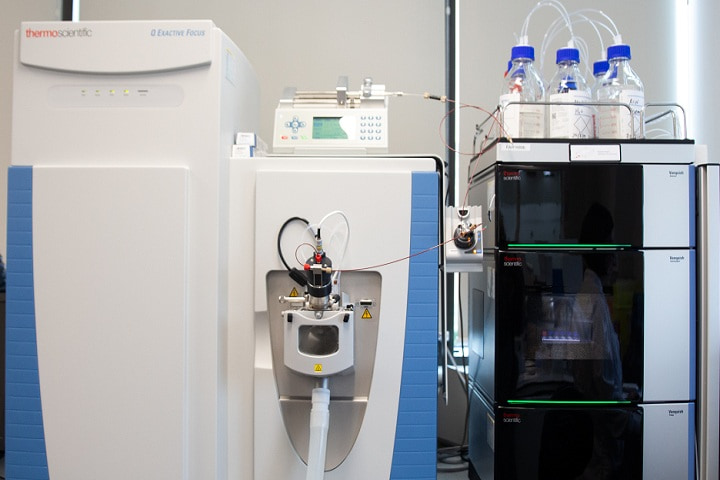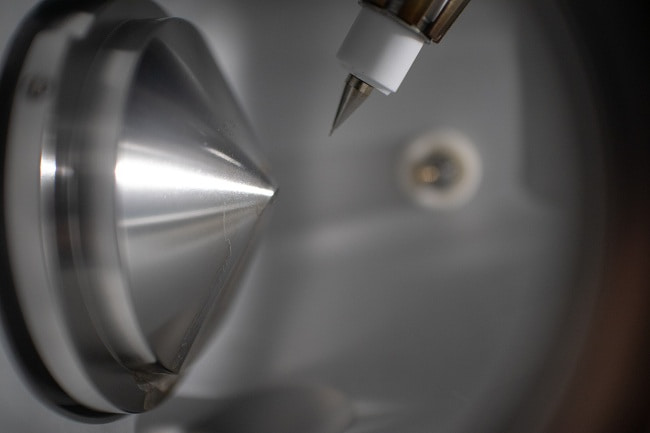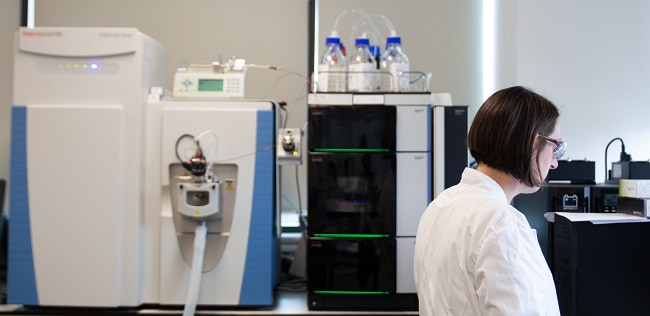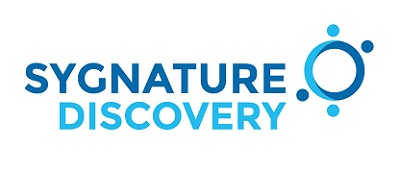Intelligent technologies are transforming the pharmaceutical industry at a company and sector level, where tools such as artificial intelligence, machine learning and blockchain are pushing the limits of data analysis and accelerating decision-making. Meanwhile, similar technological progress is also happening at the laboratory level, where the latest solutions are advancing key areas of the drug discovery and development pipeline.
At a workflow level, intelligent analytical solutions are having a significant impact on pharmaceutical development; one such area benefitting from these advancements is drug metabolite identification using mass spectrometry (MS). Characterizing drug metabolites is an essential aspect of preclinical development and can be a tremendously complex process. Here, these data help to understand the overall metabolic profile, potential pharmacological activity and toxicity of drug metabolites to ensure drug safety and efficacy.
However, capturing data of sufficient quality in a reliable manner to allow structural elucidation of detected metabolites is often highly challenging, as drug metabolites are often present at trace-level concentrations in complex biological samples. With these issues in mind, the need for high analytical sensitivity and selectivity are critical, which have been addressed over the last two decades using accurate-mass high-resolution mass spectrometric techniques. Furthermore, tandem mass spectrometry (MS/MS, MS2 or MSn) has proven to be a valuable tool for obtaining the structural information necessary for drug metabolite identification, where fragmentation data are essential in achieving confident elucidation of previously uncharacterized or unknown metabolites.
In this article, we show how advanced analytical instrumentation, combined with the latest data acquisition workflows and powerful post-acquisition tools for in-depth data mining, are providing relevant data in a time-efficient manner to help pharmaceutical companies overcome time pressures and accelerate confident drug metabolite identification.

The challenge of confident drug metabolite identification
Advances in MS technologies have transformed the collection of high-quality tandem mass spectra for the detection and identification of unknown analytes. However, traditional workflows for drug metabolite identification are hampered by several key challenges.
Structural elucidation of drug metabolites requires the sensitive detection of low abundance components that are present in complex biological matrices. In addition, identifying and triggering MSn data acquisition can be difficult when little is understood about the structure of these analytes, the way in which they fragment or the complex matrix itself. Moreover, these workflows generate large amounts of high-resolution full-scan MS and higher-order MSn data and interrogation of these data is typically undertaken manually, commonly involving extensive intervention in the initial stages. These steps are time-consuming and inherently inefficient, often not progressing the project decision or analytical endpoint in itself – rather they simply determine whether the data are of a sufficient quality upon which to make structural elucidation decisions– increasing the need to reduce non-value-adding tasks and allow the biotransformation scientist faster, relatively pain-free access to high-quality data.
Because these workflows can involve numerous manual processing steps, such as peak detection and determination of potential elemental formulae, they not only take time but are vulnerable to human biases, particularly within early data rationalization. The presence of unrelated background ions, for example, can mask signals of trace-level drug metabolites and impede analysis, requiring careful data interpretation. Even with the most experienced and thorough manual data interrogation, these labor-intensive steps can result in inaccuracies and inconsistencies between results, particularly across large data sets or lengthy multi-assay studies, making data curation and establishing metabolite cover more difficult – and ultimately the whole process less scalable.
With many pharmaceutical companies under pressure to drive decisions faster and make the best use of research resources, laboratories need more efficient, reliable, and scalable workflows to characterize drug metabolites, which not only brings the skilled biotransformation scientist more time to dedicate to more difficult problems, but also helps new users grow in confidence.

Accelerating metabolite detection and elucidation using intelligent acquisition workflows
Modern data-acquisition workflows are helping to detect and characterize metabolites more quickly and confidently by automating the early stages of data analysis, providing efficient and meaningful data rationalization tools, often with chemically-intelligent software algorithms. With key advances in the capabilities of new instrumentation, such as intelligent triggering on neutral losses or specific isotopic patterns, along with automatically subtracting background peaks based on exclusion and inclusion lists in real-time, these work flows allow the collection of more comprehensive datasets. These data sets often consist of multimodal high-resolution full-scan MS, along with higher-order MS2 and MS3 scans, which together can facilitate greater coverage for potential metabolites without pre-existing knowledge of metabolic pathways.
By streamlining the data analysis process and greatly reducing the potential for subjectivity associated with human decision-making in the initial data review, these workflows allow data to be analyzed more quickly and can aid metabolite identification experiments. Not least of all, by helping to reduce the potential for trace-level signals to be overlooked when dominated by overwhelming matrix responses, along with reducing false-positive responses, these features can help to improve confidence in the conclusions derived therein.
Pioneering post-acquisition processing and data mining tools are accelerating drug metabolite identification by taking inefficient and potentially error-prone manual steps and replacing them with chemically-intelligent features, such as automatic dealkylation prediction and user-definable algorithms, which enables the detection of targeted metabolites through biotransformation lists as well as the detection of unknown or unexpected metabolites, based upon drug structure, sub-structure or chemical features presented in these complex datasets. Together, these tools are helping generate more confident metabolite characterization data, which provides more efficient support of drug project outcomes.

A dedicated and flexible platform for metabolite identification
Cutting-edge MS technologies and software are having a measurable impact on drug metabolite identification. One company that decided to update its metabolite identification workflows to an advanced MS platform was Sygnature Discovery, a contract research organization that specializes in high-quality drug discovery services. The organization chose to implement an Orbitrap-based mass spectrometer alongside the Thermo Scientific Compound Discoverer software suite.
“Our system not only offers the high-resolution, solid mass accuracy and bulletproof reliability we’d expect from the Orbitrap technology, it also allows us to access flexible and intelligent data acquisition routines” notes Daniel Weston, Associate Director, DMPK, Sygnature Discovery.
“Together, these features bring added confidence in rationalizing large data sets quickly and aid more confident decision making.”
Equally, the enhanced ease-of-use of the Orbitrap system and software has helped streamline the design of experiments and provide impressive insights into complex datasets, as Sara Griffiths, Biotransformation Scientist at Sygnature Discovery, explains: “Acquiring high-quality data quickly and with confidence means that we can really focus on value-adding activities that drive the metabolite identification process and, ultimately, drug project decisions.”
These workflows have also enabled retrospective data analysis—a particularly useful ability, allowing researchers to probe legacy sample data without performing additional data acquisition or sample reanalysis, as Weston goes on to highlight.
“For drug metabolite identification, which often involves the ongoing re-evaluation of putative metabolties, metabolic pathways and assessing overall metabolite cover, the ability to ask different questions of the same sample data quickly and efficiently, can help our scientists reach conclusions without the retesting of biological material that might have been subjected to stability issues or have been disposed of in the intervening period,” says Weston. “It’s like having supporting data for free—you might never need it, but it’s certainly a comfort knowing that it’s there as it often helps us answer new questions or provide a different focus in a fraction of the time”.
The use of advanced software has also been a key part of the improved workflows. “We are confident in the performance of our scientists and our mass spectrometer but it is realistic to expect that, even with skilled manual data interrogation, we could encounter difficulty in detecting ambiguous trace-level responses or adding even a small level of human bias to the process, ” Weston explains. “While many metabolites may be at the trace level, this doesn’t mean that they are unimportant– quite the opposite in many ways – and we rely on software to delve into our complex data in time-efficient and unbiased ways, freeing up time for skilled manual data interrogation to be applied at more critical decision points”.
Using sophisticated MS post-data acquisition software, including powerful functionality such as fragment-ion search scoring algorithms, the company auto-annotate fragments on MS2 spectra based on their mass shift, helping to expedite identification of the site of biotransformation for expected metabolites, prior to skilled manual data interrogation, for example. As such, the team at Sygnature Discovery employs a wide range of these chemically-intelligent software tools. “The software replicates much of what we would do in our heads for initial data rationalization, but isn’t subjective, ”explains Weston. “This can save us many hours or even days when it comes to data analysis.”
Compound class scoring can also be used to reliably identify unexpected metabolites based on matching MS2 fragments on a list of related structures, and using intelligent tools to detect and characterize components of interest more quickly than can be achieved by manual data analysis alone. By detecting and partially characterizing these unexpected drug-like components, using a defined rule-based approach, these software solutions are helping to make firmer statements around overall metabolite cover, in turn increasing confidence in metabolite identification and delivering results more efficiently.
“We have had real success for our metabolism assays where we are looking for specific isotopic patterns. The isotope pattern scoring node in the software flags any component that displays the desired isotope pattern, even at trace levels which may be far harder to spot manually without being a truly exhaustive process” Griffiths notes. “Tools like this provide time-efficient, confident data rationalization and can remove numerous false positives, going from significant amounts of data to review, down to a handful of potential components for further manual review.”
Used in combination, advanced MS technologies and intelligent software are helping pharmaceutical companies and contract-research organizations overcome bottlenecks in data analysis and identify drug metabolites with increased confidence and efficiency, without the need to invest significantly in additional resources. By applying such solutions to eliminate the time-consuming and non-value-adding steps within drug metabolite identification workflows, these tools are helping to put time back in the hands of biotransformation scientists to solve more complex challenges.
Conclusion
Thanks to the latest MS technologies and sophisticated post-acquisition tools, intelligent data acquisition workflows are overcoming the challenges associated with the complexities of drug metabolite identification, helping organizations make the most efficient use of their resources. By automating some of the early data processing steps, reducing both the time taken and minimizing the potential for human biases, these powerful workflows are accelerating confident drug metabolite identification and allowing scientists to focus on more critical value-adding activities.
Author: Dr. Daniel Weston
 Primarily responsible for leading the Biotransformation and Metabolite Identification Team at Sygnature Discovery. Previously, he worked for Schering-Plough in the US, providing biotransformation support for drug discovery. In addition, he held positions at AstraZeneca in the UK, responsible for integrated biotransformation support to respiratory and oncology therapeutic areas, centered upon early de-risking around human safety and metabolic liabilities in late-stage drug development. His research interests include fundamentals of ambient ionization, mass spectrometric imaging and ion-mobility hyphenated with high-resolution mass spectrometry. Dan has a BSc (Hons) in Applied Chemistry and a PhD in ion-trap mass spectrometry, both from Nottingham Trent University, UK
Primarily responsible for leading the Biotransformation and Metabolite Identification Team at Sygnature Discovery. Previously, he worked for Schering-Plough in the US, providing biotransformation support for drug discovery. In addition, he held positions at AstraZeneca in the UK, responsible for integrated biotransformation support to respiratory and oncology therapeutic areas, centered upon early de-risking around human safety and metabolic liabilities in late-stage drug development. His research interests include fundamentals of ambient ionization, mass spectrometric imaging and ion-mobility hyphenated with high-resolution mass spectrometry. Dan has a BSc (Hons) in Applied Chemistry and a PhD in ion-trap mass spectrometry, both from Nottingham Trent University, UK
Author: Dr. Sara Griffiths

Sara uses high resolution accurate mass liquid chromatography with tandem mass spectrometry (LC-MS/MS) for metabolite profiling, metabolite identification and reactive metabolite screening. Current interests include scaling key metabolites for definitive structure elucidation by nuclear magnetic resonance (NMR), influencing projects at an early stage.
Sara obtained a PhD at Cambridge University, investigating natural products with NMR and MS, before working as an NMR spectroscopist at AstraZeneca, supporting chemists with structure elucidation and studies including quantitation, conformation, dynamics and chiral purity. Sara also worked closely with DMPK teams, successfully identifying the structure of microgram–levels of metabolites, as well as implementing studies to quantify human circulating metabolites in accordance with MIST guidelines.
Company: Sygnature Discovery
 Sygnature Discovery is a leading independent provider of integrated drug discovery and pre-clinical resource and expertise, offering fully integrated discovery project support, as well as discipline-specific support in medicinal chemistry, computational sciences, bioscience, DMPK or physical sciences as needed by our clients. Sygnature undertake target validation, hit identification, hit-to-lead and lead optimization projects as well as complete drug discovery programs. Since 2011, 30 compounds discovered by Sygnature for clients have entered pre-clinical development and so far, 14 of these have progressed to clinical trials (Phases I, II and III).
Sygnature Discovery is a leading independent provider of integrated drug discovery and pre-clinical resource and expertise, offering fully integrated discovery project support, as well as discipline-specific support in medicinal chemistry, computational sciences, bioscience, DMPK or physical sciences as needed by our clients. Sygnature undertake target validation, hit identification, hit-to-lead and lead optimization projects as well as complete drug discovery programs. Since 2011, 30 compounds discovered by Sygnature for clients have entered pre-clinical development and so far, 14 of these have progressed to clinical trials (Phases I, II and III).



















